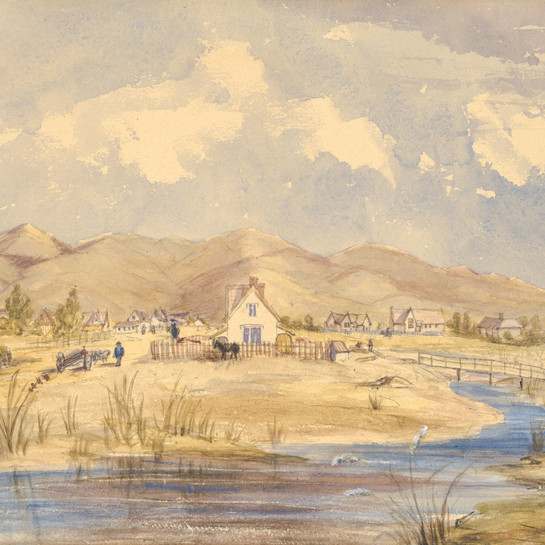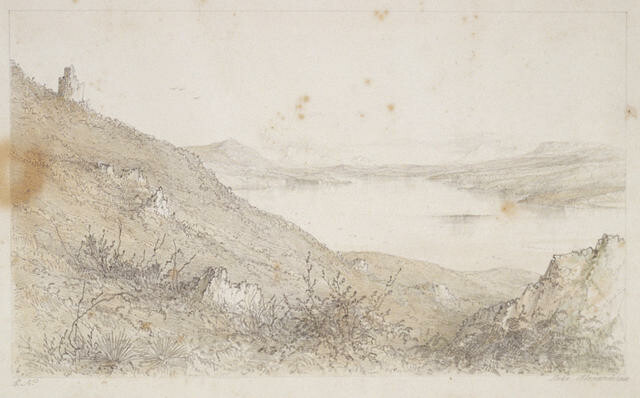Edmund Norman
British, b.1820, d.1875
Lake Alexandrina
- c. 1870
- Pencil on paper
- Purchased, 1996
- 240 x 340mm
- 96/57
- View on google maps
Tags: hills, lakes (bodies of water), landscapes (representations), monochrome, natural landscapes
Many of New Zealand’s early artists, including Edmund Norman, were surveyors. It was an occupation that required the ability to draw accurately, something Norman excelled at. He was one of the best draughtspersons to work in Aotearoa New Zealand during the 1850s and 60s, and his drawings are breathtaking in their detail. Unfortunately Norman had a drinking problem and in the early 1850s was arrested for drunkenness in Ōhinehou / Lyttelton. By the 1860s he was living a reclusive life working as a station hand in the Te Manahura / Mackenzie Country inland from Timaru. One winter’s morning he was found dead on the side of the road near the Burkes Pass Hotel. It was thought that, in a drunken state after a session at the hotel, he had collapsed on his walk home and succumbed to exposure in the cold night air. Legend has it that he had a bottle of whiskey in one pocket and sketchbook and pencil in the other. His drawings of both Ōhinehou / Lyttelton and Te Manahura / Mackenzie Country remain some of the most accomplished images of the province from this time.
(Pickaxes and shovels, 17 February – 5 August 2018)
Exhibition History
Lake Alexandrina is a small lake near Lake Tekapo in the Mackenzie Country, South Canterbury. This drawing is undated but would have been completed when Edmund Norman was working as a boundary-keeper at Haldon, a sheep station in the area, during the 1860s and early 1870s. Notable in this work is Norman’s fine, delicate use of pencil. His drawing shows the detail and accuracy he would have perfected while training as a surveyor and which he maintained throughout his career. Born in Devonport, England, Norman came to New Zealand as a surveying cadet with the New Zealand Company, arriving in Wellington in 1842. Along with all the other surveyors in Wellington, Norman’s employment was terminated in 1845. He spent time in Kaikoura, then settled in Lyttelton in 1854. Norman continued to sketch and paint in his spare time and travelled widely with his sketchbooks. On 3 June 1875 he was found dead on the side of the road just south of Burkes Pass.

